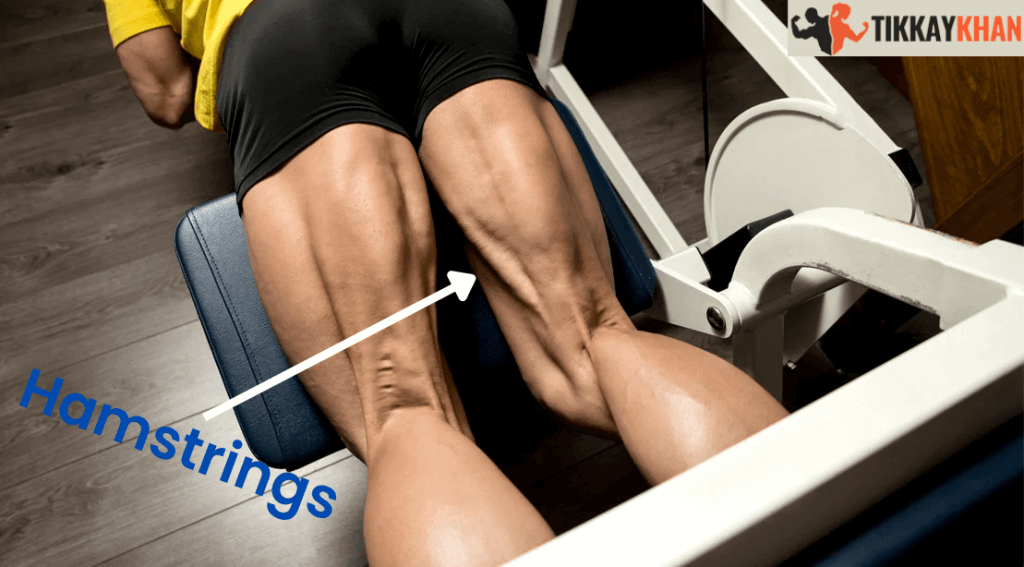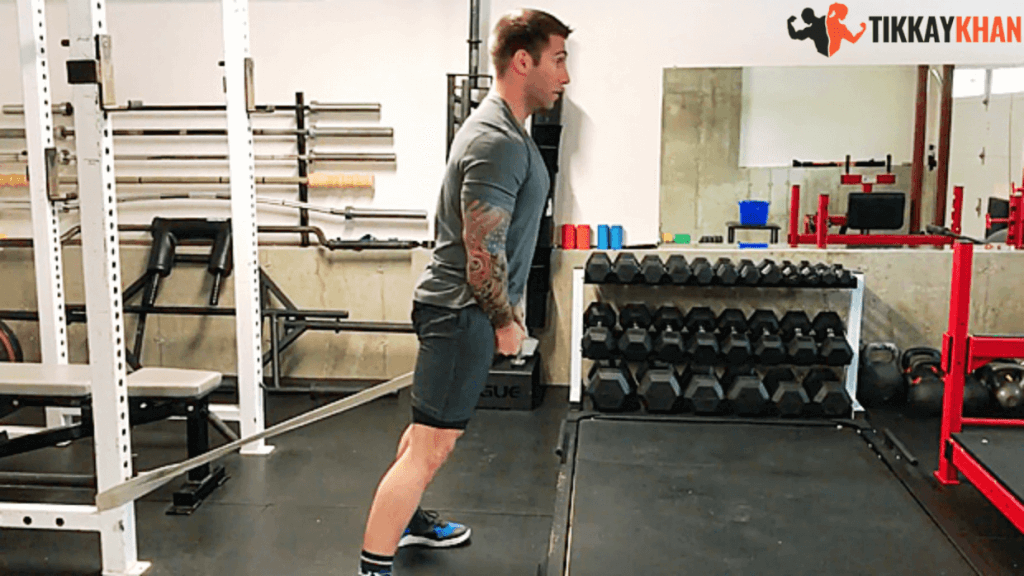The cable pull-through is a generally noticed movement for hip and hamstring growth, improved gluteal hypertrophy and constancy, and reiterates proper hip flexion and stretching mechanics.
If you are looking for a lower-back-friendly workout that’s easy to do but also appropriate for professional lifters, you should not look further than cable pull-throughs.
Muscles Worked By Cable Pull-Through

Here is the list of the primary muscles targeted by the cable pull-through exercises. These specific muscles are often trained with other hinging exercises like deadlifts, however with the cable pull through.
Cable pull-through exercises can be useful for individuals looking to not over-train or overtax their lower backs.
Hamstrings

There are three muscles in the hamstring muscles group semimembranosus, biceps femoris, and semitendinosus.
Gluteus Maximus

The gluteus maximus is the large muscle group pushing the powerful hip extension of cable pull-throughs.
Spinal Erectors

Spinal Erector muscles are responsible for extending your spine.
How to Do a Cable Pull Through
Here is a step-by-step guide on how to complete a cable pull-through.
- First, attach a string handle to a low pulley machine.
- Then stand with your back to the weight heap, feet astride the handle.
- With your abs braced and shoulders down and back, turn down and hold the handle with your hands.
- Stand up and take some of the steps forward to stress the cable.
- Stand with your feet shoulder-width separated, knees slightly bent, hands in front of your hips, and this is your starting position.
- Push your hips to the backside and lean forward until you feel a serious stretch in your hamstring muscles.
- Keep going until your hands are crossed behind your knees. Do not let your back to round.
- Keep a neutral spine throughout, and that includes your upper back and neck.
- Push your hips forward and stand back up, locking your knees and pulling your glutes as you reach the top of your rep.
- Hinge forward again.
Benefits – Cable Pull Through
Here are described the benefits of cable pull-through and what athletes can expect from performing cable pull-throughs, either with resistance bands or cables.
Strengthening the Hip Hinge

The cable pull-through can be utilized to help teach and strengthen proper hip flexion and hinging patterning essential for more advanced movements like deadlifts and pulls.
The added pressure in the unnatural phase (1) can supply neurological and motor patterning feedback to help improve a lifter’s version of what work should feel like.
Benefits for Glute and Hamstring

The cable pull-through is useful training for improving time under tension, eccentric muscle injury, and overall muscular activation of the glutes and hamstrings.
Cable pull-through can often be performed in higher volumes without further neurological fatigue or stress to the lower back.
Easy to Do
You should be capable of doing this exercise in the gym. The only items you require are a low cable machine at the gym, such as a cable crossover, and a rope handle. You can also do pull throughs using a resistance band at your home.
Cable Pull Through Alternatives

Cable pull through is a highly efficacious hindmost chain exercise, but that doesn’t mean you require it to do this all the time. There are many Alternatives you can use to keep your workouts effective and attractive.
Romanian Deadlift

The Romanian deadlift is a basic rear chain strength and hypertrophy exercise for power, strength, endurance, and pure fitness athletes.
While this does involve higher loading and much more spinal contraction, this does offer a sport-specific power training component to a training program.
You can do cable pull-through using a barbell or dumbbell as desired. It’s also feasible to do RDLs with a hex bar, which may be lower back-friendly.
Barbell Hip Thrust

The barbell hip thrust is a great lumbar spine-friendly posterior chain workout. This exercise can be done to target similar muscle groups as the cable pull-through.
This alternative can be used to improve glute hypertrophy, power, and strength and is often used with much more weight.
FAQs
The cable pull-through works for muscle groups in your posterior chain, including the hamstrings, gluteus maximus, and lower-back muscles. These specific muscles are often trained with other hinging exercises like deadlifts, however with the cable pull through.
The cable pull-through is useful training for improving time under tension, eccentric muscle injury, and overall muscular activation of the glutes and hamstrings.
The hip thrust is a great lumbar spine-friendly posterior chain workout. This exercise can be done to target similar muscle groups as the cable pull-through.